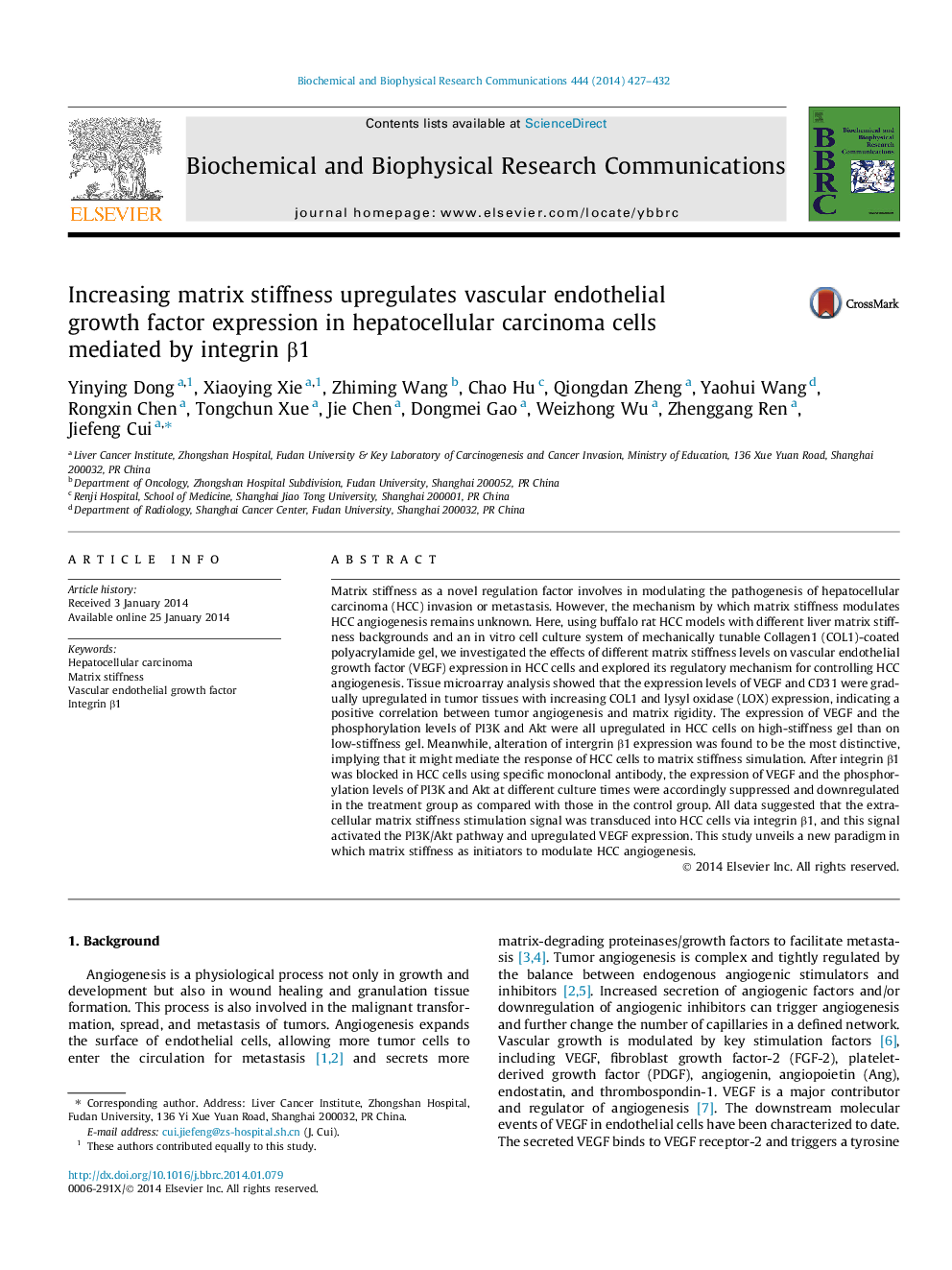| کد مقاله | کد نشریه | سال انتشار | مقاله انگلیسی | نسخه تمام متن |
|---|---|---|---|---|
| 10756948 | 1050389 | 2014 | 6 صفحه PDF | دانلود رایگان |
عنوان انگلیسی مقاله ISI
Increasing matrix stiffness upregulates vascular endothelial growth factor expression in hepatocellular carcinoma cells mediated by integrin β1
دانلود مقاله + سفارش ترجمه
دانلود مقاله ISI انگلیسی
رایگان برای ایرانیان
کلمات کلیدی
موضوعات مرتبط
علوم زیستی و بیوفناوری
بیوشیمی، ژنتیک و زیست شناسی مولکولی
زیست شیمی
پیش نمایش صفحه اول مقاله

چکیده انگلیسی
Matrix stiffness as a novel regulation factor involves in modulating the pathogenesis of hepatocellular carcinoma (HCC) invasion or metastasis. However, the mechanism by which matrix stiffness modulates HCC angiogenesis remains unknown. Here, using buffalo rat HCC models with different liver matrix stiffness backgrounds and an in vitro cell culture system of mechanically tunable Collagen1 (COL1)-coated polyacrylamide gel, we investigated the effects of different matrix stiffness levels on vascular endothelial growth factor (VEGF) expression in HCC cells and explored its regulatory mechanism for controlling HCC angiogenesis. Tissue microarray analysis showed that the expression levels of VEGF and CD31 were gradually upregulated in tumor tissues with increasing COL1 and lysyl oxidase (LOX) expression, indicating a positive correlation between tumor angiogenesis and matrix rigidity. The expression of VEGF and the phosphorylation levels of PI3K and Akt were all upregulated in HCC cells on high-stiffness gel than on low-stiffness gel. Meanwhile, alteration of intergrin β1 expression was found to be the most distinctive, implying that it might mediate the response of HCC cells to matrix stiffness simulation. After integrin β1 was blocked in HCC cells using specific monoclonal antibody, the expression of VEGF and the phosphorylation levels of PI3K and Akt at different culture times were accordingly suppressed and downregulated in the treatment group as compared with those in the control group. All data suggested that the extracellular matrix stiffness stimulation signal was transduced into HCC cells via integrin β1, and this signal activated the PI3K/Akt pathway and upregulated VEGF expression. This study unveils a new paradigm in which matrix stiffness as initiators to modulate HCC angiogenesis.
ناشر
Database: Elsevier - ScienceDirect (ساینس دایرکت)
Journal: Biochemical and Biophysical Research Communications - Volume 444, Issue 3, 14 February 2014, Pages 427-432
Journal: Biochemical and Biophysical Research Communications - Volume 444, Issue 3, 14 February 2014, Pages 427-432
نویسندگان
Yinying Dong, Xiaoying Xie, Zhiming Wang, Chao Hu, Qiongdan Zheng, Yaohui Wang, Rongxin Chen, Tongchun Xue, Jie Chen, Dongmei Gao, Weizhong Wu, Zhenggang Ren, Jiefeng Cui,